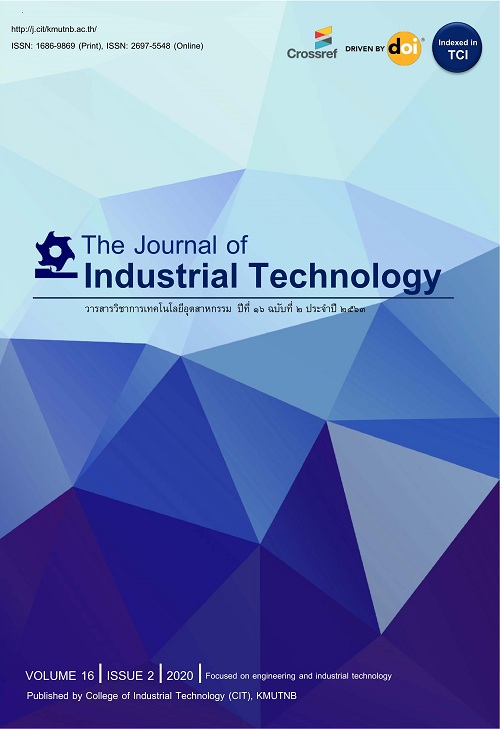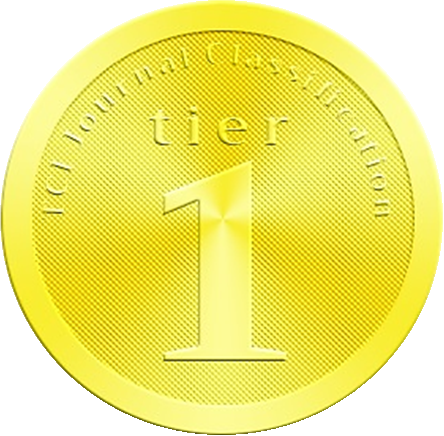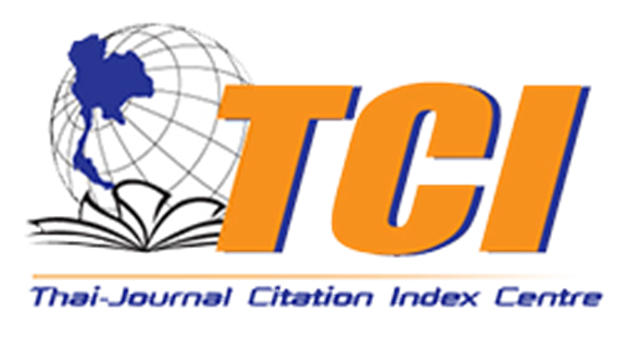Pyrolysis of Plastic Waste from Landfills Using Induction-Heating Reactor
การไพโรไลซิสขยะพลาสติกจากหลุมฝังกลบด้วยเครื่องปฏิกรณ์แบบเหนี่ยวนำความร้อน
Abstract
งานวิจัยนี้เป็นการศึกษาการไพโรไลซิสเพื่อจัดการขยะพลาสติกด้วยหลักการเหนี่ยวนำความร้อน โดยการใช้ขดลวดพันรอบกับวัสดุที่ถูกหุ้มฉนวนเพื่อให้เกิดความร้อนสำหรับกระบวนการไพโรไลซิสเพื่อจัดการขยะพลาสติกประเภท พอลิเอทิลีน (PE ) ที่อุณหภูมิ 400-600 องศาเซลเซียส จากการทดสอบการไพโรไลซิสเพื่อจัดการขยะพลาสติกประเภท พอลิเอทิลีน (PE) ที่ผ่านการฝังกลบ จำนวน 1 กิโลกรัม พบว่าที่อุณหภูมิ 600 องศาเซลเซียส จะได้น้ำมันมากที่สุดคือ 27.6 % ซึ่งมีค่าความร้อนสูงที่สุดถึง 41.33 เมกะจูลต่อกิโลกรัม และได้ปริมาณน้ำมันน้อยลงตามอุณหภูมิต่างๆ ตามลำดับ และที่ได้น้ำมันน้อยสุดคือที่อุณหภูมิ 400 องศาเซลเซียส ได้น้ำมันเพียง 18.2 % ส่วนการเทียบจากพลังงานที่ใช้ต่อปริมาณขยะพลาสติก (กิโลวัตต์ชั่วโมง/กิโลกรัม) มีค่าอยู่ในช่วง 9.60 -13.36 kWh/kg ที่อุณหภูมิ 600 องศาเซลเซียส ใช้พลังงานสูงที่สุดในการสลายขยะพลาสติกเป็นน้ำมัน และเมื่อเปรียบเทียบ ปริมาณการเกิดก๊าซ CO2 ต่อปริมาณน้ำมันที่ได้พบว่า ที่มีปริมาณก๊าซ CO2 (%โดยปริมาตร) 0.21 % อุณหภูมิ 400 องศาเซลเซียส มีปริมาณก๊าซ CO2 0.25 % ที่อุณหภูมิ 500 องศาเซลเซียส และมีปริมาณก๊าซ CO2 0.20 % และที่อุณหภูมิ 600 องศาเซลเซียส ส่วนปริมาณการเกิดถ่านชาร์ต่อปริมาณน้ำมันที่ได้ ที่อุณหภูมิ 400-600 องศาเซลเซียส มีปริมาณผงถ่านชาร์เฉลี่ยอยู่ที่ 29 % ส่วนที่มากที่สุดที่อุณหภูมิ 400 องศาเซลเซียส ได้ผงถ่านชาร์ 39 % ผลการทดลองแสดงให้เห็นว่าที่อุณหภูมิในการทำกระบวนการไพโรไลซิสขยะพลาสติกที่ อุณหภูมิ 600 องศาเซลเซียส เป็นอุณหภูมิที่ผลิตน้ำมันมีค่าความร้อนสูงที่สุดเหมาะสมในการนำไปใช้เป็นเชื้อเพลิงทดแทน ในภาคอุตสาหกรรมต่อไป
This research studies the pyrolysis process to manage plastic waste by induction heating. The coil is wrapped around the insulated material to generate heat for the pyrolysis process to manage polyethylene (PE) plastic waste at a temperature of 400–600 ˚C. The result suggested that pyrolysis of plastic waste from landfills included polyethylene (PE), the amount of 1 kilogram was performed. It was found that the most pyrolysis oil was obtained at a temperature of 600 ˚C, which was 27.6 % to have the highest heat value of 41.33 MJ/kg, and the amount of oil was reduced according to various temperatures. The least amount of oil was obtained at a temperature of 400 ˚C only 18.2 %wt. In the comparison of the energy consumption to amount of plastic waste(kWh/Kg), it was in the range of 9.60-13.36 kWh/kg. It consumes the highest energy to degradation of plastic waste into oil at 600°C. It consumes the highest energy to break down plastic waste into oil. In addition, comparing the amount of CO2 gas produced from the pyrolysis process, it was found that a quantity of CO2 gas (% by volume) of 0.21% obtained from 400 ˚C, at a temperature of 500 ˚C there was a quantity of CO2 gas of 0.25%, and at a temperature of 600 ˚C there was CO2 gas of 0.20%. As for the amount of charcoal produced per amount of oil obtained, at a temperature of 400–600 ˚C, the average of amount for charcoal powder was 29%. The highest amount was at 400 ˚C, with 39% of char product. The results showed that the temperature for plastic waste pyrolysis at 600 ˚C produced the highest calorific value which is suitable for use as an alternative fuel in the industrial sector
Keywords
[1] W. Niyommaneerat, K. Suwanteep and O.Chavalparit, Sustainability indicators to achieve a circular economy: A case study of renewable energy and plastic waste recycling corporate social responsibility (CSR) projects in Thailand, Journal of Cleaner Production, 2023, 391, 136203.
[2] V. Kittithammavong, W. Khanitchaidecha and P. Thongsanit, CO2 emissions from plastic consumption behaviors in Thailand, Sustainability, 2023, 15(16), 12135.
[3] X. Hu and M. Gholizadeh, Biomass pyrolysis: A review of the process development and challenges from initial researches up to the commercialisation stage, Journal of Energy Chemistry, 2019, 39, 109-143.
[4] J. Joo, E.E. Kwon and J. Lee, Achievements in pyrolysis process in E-waste management sector, Environmental Pollution, 2021, 287, 117621.
[5] Y.B. Sonawane, M.R. Shindikar and M.Y. Khaladkar , Use of catalyst in pyrolysis of polypropylene waste into liquid fuel, International Research Journal of Environment Sciences, 2015, 4(7), 24-28.
[6] A. Lopez-Urionabarrenechea, I. de Marco, B.M. Caballero, M.F. Laresgoiti and A. Adrados, Upgrading of chlorinated oils coming from pyrolysis of plastic waste, Fuel Processing Technology, 2015, 137, 229-239.
[7] A.K. Panda, R.K. Singh and D.K. Mishra, Thermolysis of waste plastics to liquid fuel: A suitable method for plastic waste management and manufacture of value added products—A world prospective, Renewable and Sustainable Energy Reviews, 2010, 14(1), 233-248.
[8] S.O. Giwa and M. Sharifpur, Effects of uniform magnetic induction on heat transfer performance of aqueous hybrid ferrofluid in a rectangular cavity, Applied Thermal Engineering, 2020, 170, 115004.
[9] A. Vieweg, G. Ressel, P. Prevedel, P. Raninger, M. Panzenböck, S. Marsoner and R. Ebner, Differences to a conventional heat treatment process and optimization of its parameters, Materials Science and Engineering, IOP Conference Series: Materials Science and Engineering, 2016, 119, 012019.
[10] X. Cai, H.P. Wang and B. Wei, Migration dynamics for liquid/solid interface during levitation melting of metallic materials, International Journal of Heat and Mass Transfer, 2020, 151, 1-11.
[11] G. Lopez, M. Artetxe, M. Amutio, J. Bilbao, and M. Olazar, Thermochemical routes for the valorization of waste polyolefinic plastics to produce fuels and chemicals. A review, Renewable and Sustainable Energy Reviews, (2017). 73, 346-368.
[12] B. Lokahita, W. Kurniawan, M. Aziz and F. Takahashi, Py-GC-MS of refuse materials in waste to energy point of view, Energy Procedia, 2019, 158, 497-501.
[13] A.P. Caetani, L. Ferreira and D. Borenstein, Development of an integrated decision-making method for an oil refinery restructuring in Brazil, 2016, Energy, 111,197-210.
[14] M.N. Ishak, A.R. Abu Talib and M.Y. Harmin, Material selection and design analysis of multi-purpose disposable safety syringe, International Journal of Engineering and Technology, 2018, 7(4.13), 214-220.
[15] H. Dong, Y. Zhao, H. Yuan, X.Hu and Z. Yang, A simplified calculation method of heat source model for induction heating, Materials, 2019, 12(18), 2938.
[16] F. Hajabdollahi, K.N. Premnath and S. Malepati, Effects of the magnetic field on direct contact melting transport processes during rotation, Applied Mathematical Modelling, 2018, 61, 421-442.
[17] R. Dai, Y.Wu, J. Mostaghimi, L. Tang and M. Zeng, Characteristics and control mechanism of melting process under extra magnetic force fields, Applied Thermal Engineering, 2020, 167, 114704.
[18] U.P. Anaidhuno and C.O. Mgbemena, Development of an Electric induction furnace for heat treatment of ferrous and non-ferrous alloys, American Journal of Engineering Research, 2015, 4(5), 29-35.
[19] S. Fashu, M. Lototskyy, M.W. Davids, L. Pickering, V. Linkov, S. Tai, T. Renheng, X. Fangming, P.V. Fursikov, B.P. Tarasov, A review on crucibles for induction melting of titanium alloys, Materials and Design, 2020, 186, 108295.
[20] A. Fomin, M. Fomina, V. Koshuro, I. Rodionov, Composite metal oxide coatings on chromium-nickel stainless steel produced by induction heat treatment, Composite Structures, 2019, 229, 111451.
[21] A.P. Caetani, L.Ferreira and D. Borenstein, Development of an integrated decision-making method for an oil refinery restructuring in Brazil, Energy, 2016,111, 197-210.
DOI: 10.14416/j.ind.tech.2025.04.007
Refbacks
- There are currently no refbacks.






